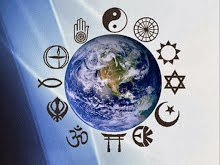Before going to the position of women in Hinduism,one must understand the true essence of Hindu scriptures and be able to discriminate between what is religious philosophy versus what was merely social philosophy in the ancient times.Actually many misconceptions are there that in India/Hinduism women are not given equal rights,they are forced to do anything without their permission and off course no doubt SATI pratha which really changed the view about Hinduism as far as women is concerned but let me tell you one thing that there is not a single line throughout the Hindu sacred scriptures which supports SATI pratha.This is the social philosophy created by time to time thus the social philosophy varies with time but the religious ideals do not.The point is critical since Hinduism has a large number of scriptures and lack of right understanding as to their content and hierarchy can result in the distortion of the Hindu religious tradition.
The following are quotes from other scriptures that further confirm the equality between men and women in all religious and spiritual aspects:
“Unite, O Lord, this couple like a pair of lovebirds. May they be surrounded by children living both long and happy ” Atharva Veda Samhita 14.2.64
“Let there be faithfulness to each other until death. This may be considered as the summary of the highest law for husband and wife.” Manu Smriti 9.101
“May our prayers and worship be alike, and may our devotional offerings be one and the same.” Rig Veda Samhita 10.191.3
The most important rite of the Vedic wedding ceremony is Sapatpadi. Here the bride and bridegroom take seven steps together around the nuptial fire (Agni) and make the following seven wedding vows to each other:
“With God as guide, let us take, the first step to nourish each other, the second step to grow together in strength, the third step to preserve our wealth, the fourth step to share our joys and sorrows, the fifth step to care for our children, the sixth step to be together forever, and the seventh step to remain lifelong friends, perfect halves to make a perfect whole.”
The words “perfect halves to make perfect whole” is the final word of Hinduism on the relationship between husband and wife. Thus Hinduism provides same religious rights and privileges to women as it does to men. Neither is woman superior to man, nor is man superior to woman. Both are “perfect halves to make perfect whole.”
While studying the ancient history, you may find that women held top religious and social positions in the Vedic period. There are references to women sages and saints in Vedas and Upanishads who were greatly revered for their religious and spiritual wisdom. During and following the epic period, the caste system (an ancient social philosophy) became rigid, which caused conflict within the society. The women often became the victims of this internal social conflict as well as the violence caused by the foreign invaders. The protection of women thus became a pressing issue for the society and the men had to shoulder this responsibility. The critical need to protect the women during the ancient period is clearly reflected in the following verse of the Manusmriti:
“Father protects (her) in childhood, husband protects (her) in youth, and sons protect (her) in old age. A woman cannot be left unprotected.” (MS 9.3)
Thus, the husband became the sole protector (like god) of his wife. This led to a social structure in which a wife was expected to cling to her husband for protection--in other words, worship him. This is why Ramayana says that the highest dharma of the woman is to worship her husband. The times have changed and the ancient social philosophy is irrelevant now.
Hindu religious philosophy views marriage like a triangle where God is at the apex and the husband and wife are at the other two corners that farm the base of the triangle. As long as the couple is at the base, there is great separation between them. However, when they begin moving towards God together, the distance between them decreases. The distance between then decreases to zero when they reach God and unite in Him forever in joy. If any one of its wings is inferior, weak or damaged, the bird will fail to fly.
In different ways and by different words, all these four Mahavakyas simply confirm the fact that an individual regardless of religion, race, culture, gender, color, cast, creed or geographic location is atman clothed in a physical body. The physical body we get is the result of our past karma. What we are now is the result of our past practice and again practice makes us what we shall be. The differences between individuals exist only at physical level. There are no spiritual differences between man and woman. The husband and wife are the two sides of the same coin. They are the two manifestations of the same atman.



0 comments:
Post a Comment